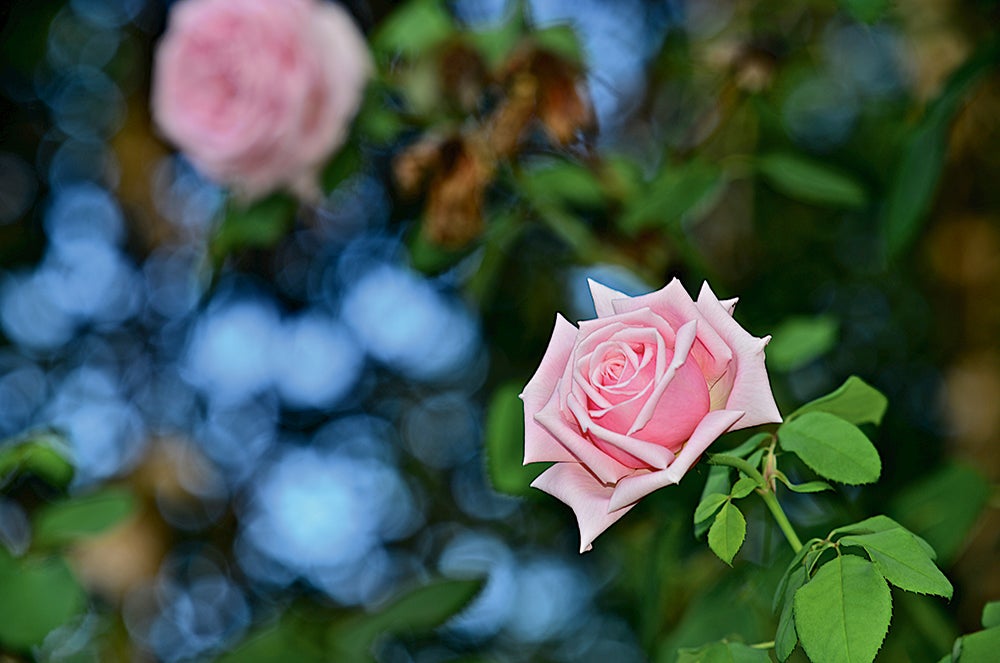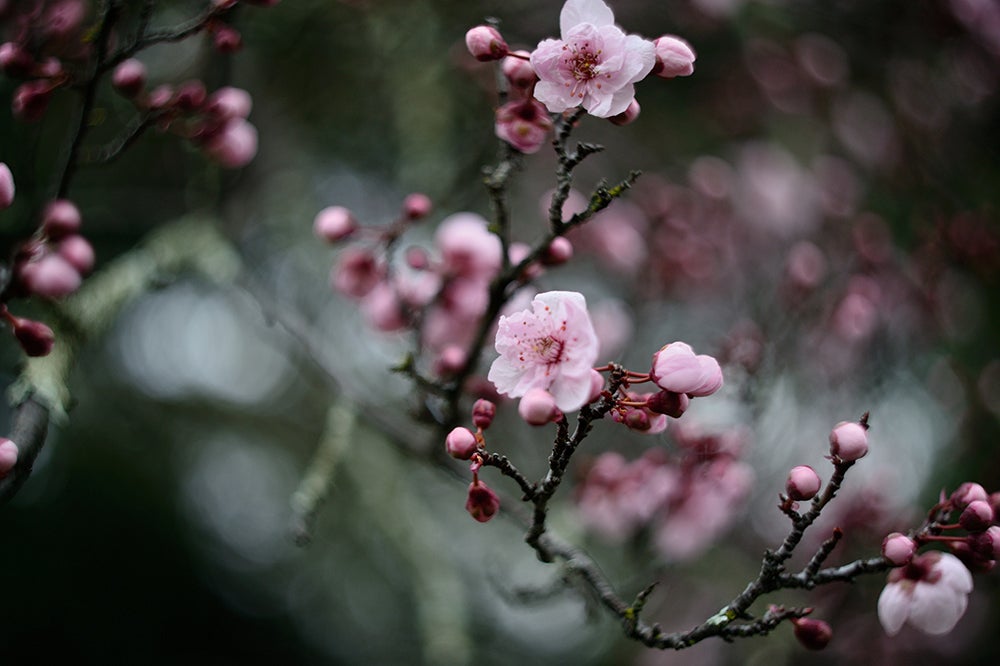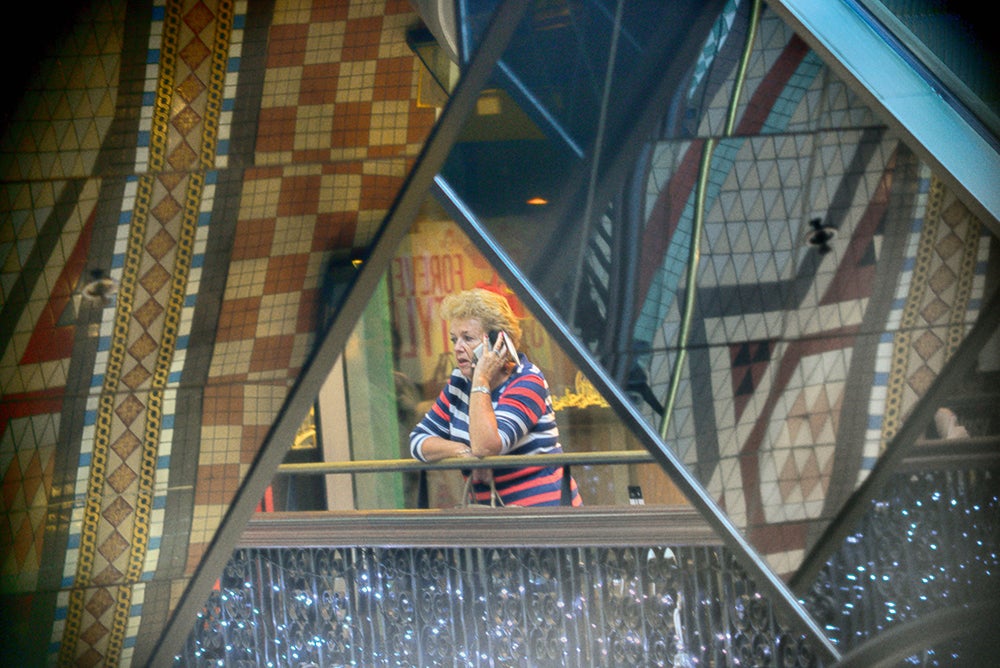Dirk HR Spennemann is fascinated by the optical capabilities of vintage and second-hand lenses. He talks to Steve Fairclough about how and why he couples classic optics with modern DSLRs

Hermagis Hellor f/4-5 135mm lens on Nikon D800 body. All images by Dirk HR Spennemann
In his day job, Dirk HR Spennemann is Professor of Cultural Heritage Management at Charles Sturt University in New South Wales, Australia. But outside of academia his hobby is ‘mucking around’ with vintage cameras and lenses. Speaking via Skype from Australia, Dirk quickly makes it crystal clear that his style of photography is a creative escape from the much stricter constraints of documenting archaeological sites and historical buildings.
‘By training I’m an archaeologist, so I have had to document all sorts,’ says Dirk. ‘My professional photography was mainly just dry, documentary stuff.’ In the 1980s, Dirk invested in three Olympus OM-1 bodies because they were robust and devoid of electronic parts, so wouldn’t fail when he was working in tropical conditions.
‘For years most of my photography remained rather boring; images that make your eyes bleed,’ admits Dirk. ‘I was still required to take them as a professional, but if you photograph a building or a site there are very clear rules as to what you do and don’t do – minimise distortion, proper angles, certain details, the light has to be right; ideally it is boring and overcast so you get all the details you want without any shadows and so forth.
‘I’ve been doing this for 30 years, but I very quickly realised that these [type of images] put your students to sleep. So you start by changing and playing with angles and so on – that’s when my photography took off. I realised I could take two sets of images – one I wanted to take and those I have to take, so now I shoot twice.’

Cindo Paris projection 85mm lens on Nikon D800 body
Inspirations and angles
Dirk refrains from naming any specific photographers as inspiration and reveals: ‘I don’t emulate other photographers, but over time you suddenly realise there are dramatic angles to objects and places, which you can intentionally manipulate through points of view and from angles. The more you do [photography] I think the more your brain develops in a sense that you have a “mental eye”.
Now I’ve moved further on and have images in my head that I want to shoot – I’m not yet sure how and where, but I know exactly what I want. Sometimes I have to create technology to make it work and sometimes you can use a standard lens. The “mental eye” drives what I want to achieve.’
His decision to combine vintage lenses with modern DSLRs came, he says, ‘About five or six years ago. I was collecting cameras, and still am; I collect the predecessor of Konica, but only up to 1945. One of the things I quickly realised was that as lens technology has improved, they have become sharper and sharper, to a level that they are no longer nice. They are great for certain things, but there’s a sharpness to it which I think is almost brutal.’
This dislike of the brutal sharpness of modern lenses, combined with Dirk’s overriding desire to achieve stunning, almost ‘painting-like’ background bokeh and incredibly shallow depth of field in his images, meant he had to seek a different optical route. It was one he felt was only possible with the optical make-up and design of older, pre-1945 lenses that feature no lens coatings and more aperture blades – Dirk was seeking between 13 and 20 blades in order to get more circular bokeh.
One of the other key advantages is the fact that the coverage of the vintage lenses – which were often originally produced for larger format cameras – is much greater than that of a 24x36mm full-frame digital sensor, which implies that only the centre of the lens is rendered onto the sensor while any fall off or aberration at the margins is omitted.

KMZ Helios 44 lens on Nikon D800 body
What’s in the kitbag?
Although Dirk’s conventional kitbag is quite straightforward – it includes the Nikon D300 and D800 DSLRs, an array of modern Nikkor lenses, a Fujifilm X-Pro1 and a Widelux panoramic film camera – it’s when the marriage of much older lenses to modern Nikon DSLR bodies comes into play that things get interesting. He estimates he now has ‘maybe hundreds’ of vintage lenses and a similar number of cameras.
‘I always liked the Nikon [system] but it has one setback for playing with historic lenses and that’s the flange [focal] distance, which is about 3.5mm more than the Canon – 3.5mm is a hell of a lot when it comes to focal points,’ says Dirk. ‘I liked the D80; then the D300 and when the D800 came out you could blow images up to the size of a wall – that was perfect because it meant I could shoot and enlarge as needed.’
He adds: ‘In my collection I’ve got early Konica lenses – the early Hexars and so forth. The one I favour is the Hexar 20cm, that’s how it’s marked, so [it’s really a] 200mm f/3.5. It comes from a camera by Konica – although at that time [1940] they were known as Konishiroku. It’s a lens designed for an SK-100 aerial camera so it has a very flat representation and it’s for medium format; it normally shoots on 7x7in. It has an absolutely shallow, flat depth of field with 19 aperture blades – it’s perfect.
‘The other one I really like, which has a brass barrel on it with two focusing wheels, is actually a projection lens. It’s for a Laterna Magica image projector and has no aperture at all – you can only shoot it wide open; it has the most gorgeous bokeh you can imagine. It’s the Cindo 85mm that, interestingly, is very sharp, but it’s “soft-sharp” if that makes sense. It has a focus drop-off which is really flattering for portraits and it would also make a good video lens.’
Aside from those two key lenses, Dirk’s collection includes classic lenses from makers such as Rodenstock, Renaux, Emil Busch, Krauss, Pipon, Baker & Rouse, Hermagis and Berthiot.

Cindo Paris projection 85mm lens on Nikon D800 body
The attachment process
The fusion of vintage lenses with modern DSLRs is something Dirk calls ‘antique camera simulator’, as anyone using this method is simulating the results they would get from an antique camera and lens combo. The next process is how to achieve this fusion of old and new imaging worlds.
‘Basically, there are a couple of fixed things you have – I’ve got two focusing helicoids, which gives me about 20cm of extension and quite a bit of focusing range. You have to shoot with a lens that has a focal length of more than 50mm; if you choose one that’s less than 50mm you are in strife because otherwise it simply focuses in between the sensor plane and the lens.
‘It’s basically a question of measuring out the diameter of the screw and the type of screw fitting the lens has, finding a filter ring which has the same diameter, and then you are in the normal filter pattern – reduce it from 57mm to 52mm or whatever. In the end, you cobble together a series of those rings or extension tubes and you know the lens is say 180mm, 6in, or whatever, then you’ve got some sort of idea of how much you need to put in – then it’s a case of literally practising and seeing what you end up with. Digital is instant resolution and instant results, so you can check and you know what you’re getting.’

Unnamed, probably British, 5in brass-bound projection lens (52.5mm, Petzval design) in brass focusing mount on Nikon D800 body
Finding and buying
As for sourcing the vintage optics, Dirk reveals: ‘When I’m in Paris I go to the flea markets; I know the traders and they bring stuff in and show it to you. You buy online or buy at camera fairs, but they tend to be over-priced. You then follow certain trends so you work out what type of lens does what and you get two or three different makes of the same type of lens to see if there’s any big [optical] difference. They usually come with a similar screw system, so once one set-up is going you can just swap the lens, which will also be the front element, in and out and see what it does. The differences are quite often fairly limited, but some of them are quite dramatic.’
With regard to prices, Dirk laughs and says: ‘The most I’ve spent on a lens is a standard Nikon – they’re way more expensive. Most of the lenses you would end up with, unless you get ones that have a real cachet, you’d be looking at about £50 or £60. If you want to spend £100 you can have the world at your feet. I’ve got a Vöigtlander Heliar coming which I want to play with, but that cost me about £20 because it was stuck to a camera and people didn’t realise what it was.
‘Lenses don’t have to be expensive. If you get a few filter-ring adapters and whatever you need as an adapter to get from an M42 or M39 [screw fit] to get on to whatever digital system you’ve got… once you’ve got that sorted the rest of it is basically playing. I would urge people to start with a cheaper lens to see how complex that is but, if they can play with Lego, they can do it!’

Rokuoh Sha Hexar Series I 21cm f/4.5 lens on Nikon D800 body
Shooting with vintage lenses
As for shooting with the lenses, Dirk explains: ‘They tend to be less forgiving in strong contrast, so you have to think about not having strong shadows, unless you really want them. In many respects, they tend to work better if it’s slightly ambient, overcast light rather than strong sunlight. Australia, where I live, has fairly brutal light, so for European photographers these lenses have more applications.
‘What I’ve learned with these lenses, because they’re so flat, is that once you think it’s in focus you photograph and then you rock forward and then backwards about half an inch or an inch [1-2.5cm] at the most and take a few photos – that will give you sufficient [options] so that one of those will be the perfect [picture]. They’ll all be good, but one will be quantifiably better.’
There’s one disadvantage Dirk wants to make very clear – that is, digital camera sensors are, of course, electromagnetically charged and so they suck dust.
‘If you want to have a nice clean sensor, just weld the lens on and keep it on there, but the moment you’re mucking around with lenses, moveable parts and historic stuff, there’s crud. So just get used to the fact that you are investing in a perpetual camera clean.’

French Aplanat 240mm f/8 (unmarked) on Nikon D800 body
Post-production workflow
All of Dirk’s images are shot raw and he explains: ‘I back up instantly so they’re safe because of my paranoia [about losing images]. Then I go through the images to see which ones I may or may not want to play with and then it’s usually only a minor sharpening or minor contrast adjustment – a bit of playing with the levels – unless I really want a [dramatic] outcome.’
He previously used Aperture but since switching operating systems he now deploys Lightroom and reveals: ‘For black & white conversions I actually prefer the Google [Nik Collection] Silver Efex Pro [plug-in], which is very nice and simple, but it is a one-trick pony that’s just for the conversion to black & white. I’ve got an array of those – it’s not just one program which does it all – there are certain things for very specific things.’
When quizzed on what he wants viewers to see in his post-processed pictures Dirk responds: ‘It’s simple. As a photographer I’ve got control over your eye in the sense that I choose to show you what I want you to see but I have no control over your mind. I choose all the angles and other stuff; in post-processing I can play with highlights and whatever I want to and I give you something that I can control. The moment you are looking at it you are interpreting what you’re seeing based on your life experiences, social upbringing, interests, mood at the time when you’re looking at the image. If it [the image] is boring then everyone will see the same [thing] and I’ve failed.’
To find out more about Dirk HR Spennemann’s photography and vintage photographic equipment, visit his website at www.ausphoto.net




